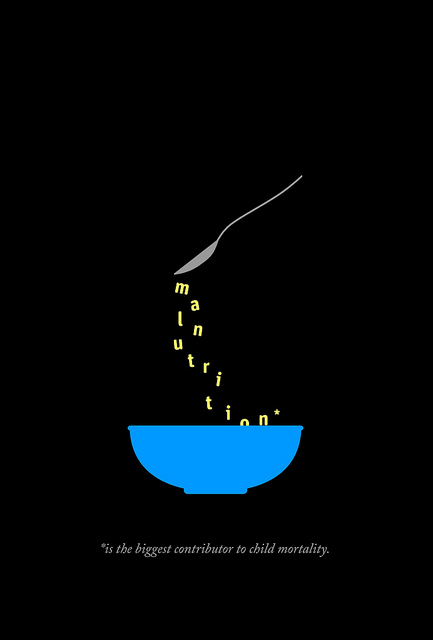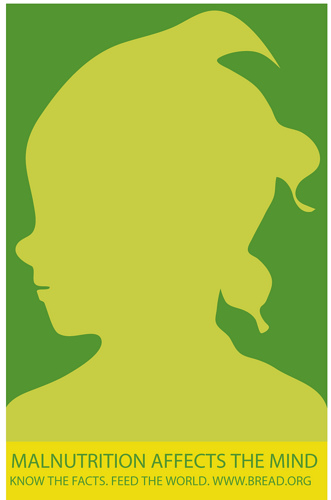For thousands of years civilizations have extended social safety nets to its most disadvantaged members in order to ensure a minimal level of wellbeing. The Roman Empire, ancient Judaism, the Chinese Song Dynasty, the Catholic Church, Islam and many many other civilizations have a history of providing social welfare not only out of a humanitarian ethic, but in order to raise the quality of life of all citizens. “A nation’s greatness is measured by how it treats its weakest members,” to quote Mahatma Ghandi.
This ethical imperative has come under assault in America from a vocal minority over the decades. From form President Ronald Reagan creating the now near-mythological “Welfare Queen” stereotype that pundits have regularly invoked in one form or another ever since, despite a dearth of evidence that such a person ever existed, to the more recent case of Fox News arguably going off the deep end in its efforts to demonize the poor in America (more examples here). They are decrying what they see as abuse of the social welfare system, and many of them advocate its dissolution altogether.
What would happen if we got rid of social welfare altogether? Got rid of food stamps and other governmental forms of assistance to ensure poor children have proper nutrition, basic education, and health care? Science knows the answer.
Science knows because scientists have studied children born in times of famine, seeing how they compare to children born in other times, and have witnessed and documented the lifetimes of hardship that result. As Lise Eliot, Associate Professor of Neuroscience at The Chicago Medical School of Rosalind Franklin University of Medicine & Science, explains:
The effects of malnutrition have been thoroughly studied in experimental animals, where we have achieved a fairly detailed understanding of the timing and type of nutrients needed for optimal brain development. Unfortunately, plenty of data are also available for human populations. A large proportion of children in the world are undernourished because of famine, poverty, war, and other natural or man-made disasters. It is through studies of such children that we have learned the ways in which inadequate early nutrition can permanently impair brain function. Children who were undemourished as fetuses or infants tend to score lower on IQ tests, perform more poorly in school, have slower language development, exhibit more behavioral problems, and even have difficulties with sensory Integration and fine motor skills, compared with children from the same culture who were adequately nourished. The earlier the malnourishment begins (starting with midpregnancy) and the longer it lasts, the greater will be the resulting problems and the less likely they can be overcome later on. By comparison, adults who undergo even the most extreme starvation do not suffer any intellectual impairment. Thus the brain has a special sensitive period for nutrition in infancy corresponding to the phase of massive synapse growth and axon myelination, both of which require considerable metabolic energy. [emphasis mine]

The Great Depression
Courtesy of the National Archives and Records Administratio
So the permanent neurological impact of stress and malnutrition have come partly from animal studies, but have also come from observing humans as well. Unfortunately, recent human history has provided numerous case studies in human suffering that allow us to see the long-term effects of stress and malnutrition on other human beings. The Dutch famine of 1944, the Romania Abortion Ban that led to an unsustainable influx of children to poorly-supplied orphanages, and even more recent studies of children who were in utero when their mothers encountered the stress of natural disasters are just a few examples of scientists stepping in to observe the long-term effects of tragic circumstances, and the effects appear to last a lifetime.
Consider journalist Annie Murphy Paul describing the findings of a researcher who was studying the lifetime effects the 1914-18 flu pandemic on the children of mothers who were pregnant at the time:
Initially, Almond doubted that the intrauterine conditions provided by a pregnant woman, even one sick with a virulent strain of the flu, could exert any lasting influence on her offspring. “When I started looking at the influenza pandemic, I was skeptical of the fetal origins hypothesis. I didn’t think I’d find any long-term effects,” Almond says. “But the evidence was the opposite of what I expected.” Through an analysis of census data, Almond discovered that those individuals gestated during the pandemic did poorly as children and adults compared to cohorts born shortly before or after the flu hit. “People who were in utero during the pandemic did worse, on average, on just about every socioeconomic outcome recorded,” he says. Over their lifetimes, they displayed lower educational attainment, lower income, and lower socioeconomic status; they suffered higher rates of disability, and required higher welfare payments. Individuals gestated during the pandemic were 15 percent less likely to graduate from high school, and 15 percent more likely to be poor; the men earned wages that were 5 to 9 percent lower, and they were 20 percent more likely to have heart disease or to be disabled as older adults. Even their height was affected: when the cohort of people born soon after the pandemic showed up for enlistment in World War II, they were shorter than recruits born the year before and the year after.
…Because of the long-lasting impact of prenatal conditions, Almond tells me, “you could say that the influenza pandemic of 1918 isn’t over yet.” [emphasis mine]
Stress and malnutrition during pregnancy and infancy manifest a lifetime of cognitive adversity. Carl Sagan spoke about the crucial period of Perenatal Nutrition in cognitive development (starts at 5:10), and the moral and rational impetus placed on societies to prevent such tragedies:
A major problem is perenatal malnutrition. Around a few months before birth and the first years after birth, if you don’t have enough to eat you get permanent learning deficits, you get attention problems, you have social compatibility problems. This occurs in people of every ethnic group and it’s a lifelong disability. Now, a family staying together, if there isn’t enough money to prevent malnutrition in the baby, doesn’t solve this problem.
Another problem is the extremely poor quality of education in many parts of America, especially poor neighborhoods. Another is the unavailability to a large number of people who want it, of Headstart and related programs. I could go on, including the fact that the United States is not best but 23rd now in combating infant mortality.
Now there are lots of aspects of the problems that children face, the bill for which we are going to have to pick up in the next generation that are not solved in any way by rhetorical appeals to family values. They can only be solved by the government helping these families because, if you don’t have a compassionate bone in your body, just a simple cost-benefit analysis would be sufficient to show it is in the national interest to prevent these disabilities in children.
Luckily, thanks to wonderful social welfare programs implemented in America, scientists also have case studies on the benefits of social programs. Just as natural disasters, malnutrition, and prenatal stress have deleterious effects on a person’s entire life, so too do social programs combating malnutrition, lack of education, and parental stress factors manifest in lifelong improvements in a child’s quality of life. As John Medina, affiliate Professor of Bioengineering at the University of Washington School of Medicine, describes with a precursor to America’s Headstart Program:
In 1962, researchers wanted to test the effects of an early-childhood preschool training program they had designed. Kids in Ypsilanti, Michigan, were randomly assigned to one of two groups. The first attended the preschool program (which eventually became a model for other preschool programs nationwide, including Head Start). The second group did not. The differences powerfully illustrate the importance of a child’s early years. The kids in the program academically outperformed the controls in virtually every way you can measure performance, from IQ and language tests in the early years to standardized achievement assessments and literacy exams in the later years. More graduated from high school (84 percent vs. 32 percent for the girls). Not surprisingly, they were more likely to attend college. The kids who were not in the program were four times more likely to require treatment for a mental-health problem (36 percent vs. 8 percent). They were twice as likely to repeat a grade (41 percent vs. 21 percent). As adults, those who had been in the program were less likely to commit crimes and more likely to hold steady jobs. They made more money, more often had a savings account, and were more likely to own a home. Economists calculated that the return on society’s investment in such a program was 7 to 10 percent, about what you’d historically get in the stock market. Some estimate a substantially higher return: $16 for every tax dollar invested in early childhood.
Just as Carl Sagan argued, there is a return on the investment to society, in this case for investing in a child’s early education. Annie Murphy Paul cites a similar benefit from America’s implementation of the Food Stamp program:
Seizing on yet another natural experiment, Almond examined the impact of the introduction of the food-stamp program in the late 1960s and early 1970s. The program was rolled out on a state-by-state basis, allowing Almond to compare birth outcomes for poor women who received food assistance during pregnancy to those who did not. His results, published in The Review of Economics and Statistics, found that women who were enrolled in the program three months before they gave birth delivered babies with higher birth weights, and that the improvement was especially significant for African Americans.
If ancient societies could understand the importance of providing for their poorest members, we can provide for our own in the modern world. If stress on the fetus and infant create permanent cognitive impairments on our children, then we have more than just a compelling moral need but an obligatory social imperative to action that will improve our entire civilization’s quality of life. As Lise Eliot best argues, “If children are so greatly malleable. then the best way to ensure a great society is by improving the environment of its youngest members.”
References
Paul , Annie Murphy, Origins: How the Nine Months Before Birth Shape the Rest of Our Lives, Free Press
Eliot, Lise, What’s Going on in There? : How the Brain and Mind Develop in the First Five Years of Life, Bantam
Medina, John, Brain Rules for Baby: How to Raise a Smart and Happy Child from Zero to Five, Pear Press
Further Reading
Annie Murphy Paul has a wonderful passage in her book Origins where she describes the fetus as taking in information about the environment to which it will be born:
Much of what a pregnant woman encounters in her daily life—the air she breathes, the food and drink she consumes, the emotions she feels, the chemicals she’s exposed to—are shared in some fashion with her fetus. They make up a mix of influences as individual and idiosyncratic as the woman herself. The fetus incorporates these offerings into its own body, makes them part of its flesh and blood. And, often, it does something more: it treats these maternal contributions as information, as biological postcards from the world outside. What a fetus is absorbing in utero is not Mozart’s Magic Flute, but the answers to questions much more critical to its survival: Will it be born into a world of abundance, or scarcity? Will it be safe and protected, or will it face constant dangers and threats? Will it live a long, fruitful life, or a short, harried one? The pregnant woman’s diet and stress level, in particular, provide important clues to prevailing conditions, a finger lifted to the wind. The resulting tuning and tweaking of the fetus’s brain and other organs are part of what give humans their impressive flexibility, their ability to thrive in environments as varied as the snow-swept tundra, the golden-grassed savanna—and the limestone canyons of Manhattan’s Upper West Side.



Comments
2 responses to “The Science of Social Welfare”